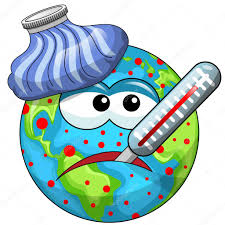COVID-19 ORIGIN-WUHAN: WHO investigation team visits 2nd Wuhan hospital
A woman wearing a mask walks past statues with masks placed on them in Wuhan in central China’s Hubei province . PHOTO: AP
.
.

WUHAN, CHINA (AP) — Members of a World Health Organization (WHO)team investigating the origins of the coronavirus pandemic visited another Wuhan hospital that had treated early COVID-19 patients on their second full day of work yesterday.
Wuhan Jinyintan Hospital was one of the city’s first to deal with patients in early 2020 suffering from a then-unknown virus and is a key part of the epidemiological history of the disease.
.


.
Ads by: Memento Maxima Digital Marketing
@[email protected]
SPACE RESERVE FOR ADVERTISEMENT
“Just back from visit at Jinyintan hospital, that specialised in infectious diseases and was designated for treatment of the first cases in Wuhan,” Dutch virologist Marion Koopmans said in a post on Twitter. “Stories quite similar to what I have heard from our ICU doctors.”
Zoologist Peter Daszak of the United States (US) group EcoHealth Alliance, who is a member of the team, said in a tweet that the visit was an “important opportunity to talk directly” with medics who were fighting the virus at the critical time.
The team’s first face-to-face meetings with Chinese scientists took place on Friday, before the experts who specialise in animal health, virology, food safety and epidemiology visited another early site of the outbreak, the Hubei Integrated Chinese and Western Medicine Hospital.
The Geneva-based WHO said late Thursday on Twitter that its team plans to visit hospitals, markets like the Huanan Seafood Market that was linked to many of the first cases, the Wuhan Institute of Virology, and laboratories at facilities including the Wuhan Centre for Disease Control.
“All hypotheses are on the table as the team follows the science in their work to understand the origins of the COVID-19 virus,” WHO tweeted. It said the team had already requested “detailed underlying data” and planned to speak with early responders and some of the first patients.


.
Ads by: Memento Maxima Digital Marketing
@[email protected]
SPACE RESERVE FOR ADVERTISEMENT









